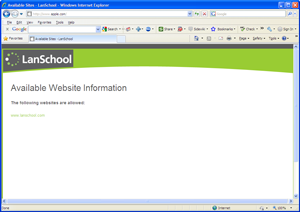
“For me, the biggest aid in using it has been identifying where they’re getting stuck, where these misconceptions and misunderstandings are,” she said.

But now she uses it to pinpoint which students need coaching on tricky tasks like calculating a standard error for their lab reports. She’s used GoGuardian Teacher for several years, and she believes the pandemic has actually helped refine her use of it.īefore, she said, she used it mostly to make sure students were on task. Kathy Richardson, a high school biology and marine ecology teacher, teaches in the Louisa County, Va., district and for a regional online learning collaborative. Thank you, for making supporting my students in distance learning so much easier! I can see their screens in real time and provide support (and reminders to stay on task and off Youtube) so much quicker! 10/10! /I5jPiS0Bgg- Tami Novak March 2, 2021 The movement toward cloud computing and increased fears about student safety-coupled with ambiguities in the CIPA law, which did not detail where surveillance should stop-means that as the tools have evolved, they’ve grown more powerful. One provider of classroom-monitoring software, LanSchool, began in 1986, when all school computers were hardwired in labs.
#HOW TO BLOCK LANSCHOOL STUDENT INSTALL#
Beginning with the federal Children’s Internet Protection Act, in 2000, districts receiving federal school-connectivity funds had to install internet filters on their hardware and devices to protect children from obscene content.Īctual thumbnail-like monitoring of individual devices also dates back decades. The monitoring of students’ web use is hardly new.

“It’s something we rarely see in student privacy conversations.” How do remote classroom-management systems work? “So there’s the need for clear information from schools that have installed these products, why they’re installed, what the data protection is, and what the rights of students and parents are,” she said. But it is going to continue long after students are no longer primarily at home,” said Amelia Vance, the director of youth and education privacy at the nonprofit Forum on Privacy. “When you’re at home, this monitoring starts to feel much more invasive and creepier. And, noted privacy experts, the nation’s experiment with remote learning has blurred the line between home and school to an unprecedented degree. Just like circulating about a classroom, a teacher using them can ensure students are on task, and quickly assess who might need some additional, personalized help.īut one thing is abundantly clear: Use of remote classroom-management tools has undoubtedly increased over the last year as millions of students learned full-time from home.ĭistricts have scrambled to get millions of devices into the hands of students and to respond to the needs of their teachers, most of whom have never taught remotely before and are desperately seeking ways to engage students. The companies that sell the products say the tools help replicate good brick-and-mortar classroom practices. His teachers are looking, in real time, at what he’s doing,” said Hootman, whose children attend school in the West Contra Costa, Calif., district.

It’s not generalized it’s not a ‘ping’ from some student who used some trigger word. “My main objection is the personal level of the surveillance. But the systems also raise questions about an ever-expanding surveillance apparatus in American schools. In interviews, some teachers said they use the tools in productive ways rather than to spy or punish, and that the tools have smoothed out some of the tough work of remote schooling.


 0 kommentar(er)
0 kommentar(er)
